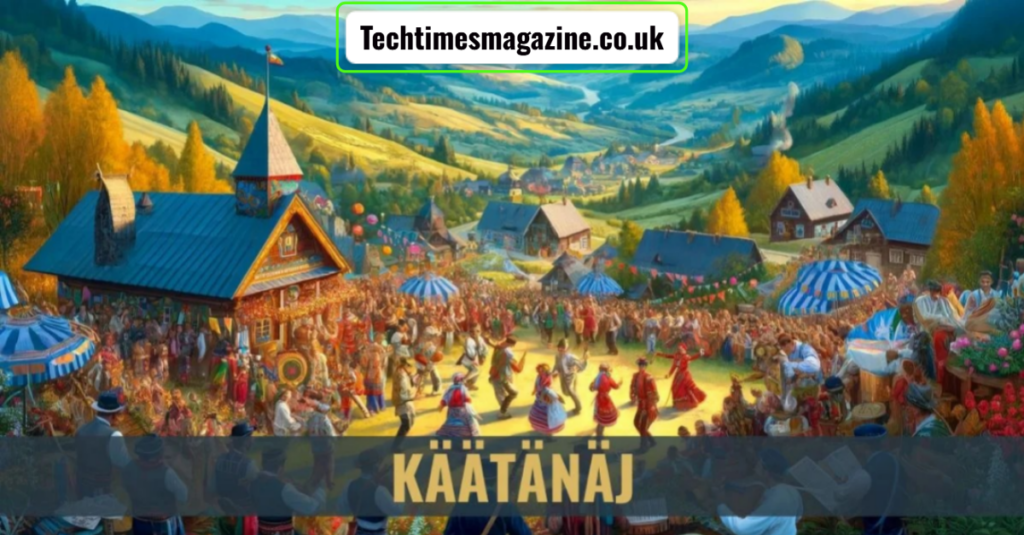
Introduction to Käätänäj
The term “käätänäj” might seem unfamiliar to many, but it carries a rich cultural and linguistic significance. In a world where languages evolve and adapt, words like känäj reflect the depth and diversity of human expression. Whether it is a colloquial term, a cultural symbol, or a linguistic curiosity, understanding the roots and implications of käätj can provide fascinating insights into the societies that shaped it. This article delves into the history, meanings, cultural importance, and modern uses of känäj, shedding light on why it remains relevant today.
The Etymology and Meaning of Käätänäj
The origins of käät are steeped in linguistic history, tracing back to the ancient dialects of Northern Europe. It is believed to have roots in the Finno-Ugric language family, which includes Finnish, Estonian, and several minority languages in Russia. The structure of the word itself hints at its old origins, possibly related to words signifying strength, tradition, or deep-rooted cultural practices. Understanding this background is crucial for appreciating the broader context in which känäj emerged.
Cultural Significance of Käätänäj
Käätänäj holds a special place in the cultural narratives of the regions where it originated. It often represents a connection to the past, symbolizing the endurance and resilience of traditions that have survived through centuries. For the communities that use it, käätäj is more than just a word – it is a representation of identity, reflecting their unique worldview and way of life.
Modern Interpretations and Uses
While känäj may have ancient roots, it continues to find relevance in modern contexts. Today, it can be seen in contemporary art, music, and literature, often used as a metaphor for authenticity or deep connection to one’s roots. This evolution illustrates the dynamic nature of language, where even the oldest expressions can adapt to new cultural landscapes.
Käätänäj in Popular Media
In recent years, the term has also found its way into pop culture, being referenced in films, songs, and digital media. This shift reflects the growing global curiosity about lesser-known languages and cultures, as well as the internet’s power to spread and popularize regional expressions.
How Käätänäj Reflects Cultural Resilience
The persistence of käätäj through changing times demonstrates the resilience of cultural identity. In an era of rapid globalization, maintaining linguistic diversity becomes a powerful act of cultural preservation. Käääj embodies this spirit, serving as a reminder of the importance of keeping cultural histories alive.
Käätänäj and Its Linguistic Relatives
Linguists often study käänäj alongside other terms from the same language family, noting similarities in structure and usage. This approach helps unravel the broader linguistic connections and historical pathways that have shaped these languages over time.
Käätänäj in Art and Literature
Artists and writers often draw on the deep, evocative nature of words like käätänäj to convey complex ideas and emotions. Its use in literature often signifies a longing for the past or a deep connection to heritage, making it a powerful tool for storytelling.
Käätänäj as a Symbol of Cultural Pride
For many speakers, käätäj is a source of cultural pride, a reminder of their rich heritage in a rapidly modernizing world. It stands as a linguistic symbol of survival and continuity, representing the enduring power of tradition amidst change.
Digital Preservation of Käätänäj
The digital age has brought new challenges and opportunities for preserving käätäj. Online platforms, social media, and language apps now play a critical role in keeping the word alive, providing spaces where it can be used and understood by a global audience. This shift to digital platforms reflects the adaptability of language and the growing importance of online cultural preservation.
Käätänäj in the Context of Language Revitalization
Many indigenous and minority languages face the risk of extinction, and käätänäj stands as a powerful example of why these efforts matter. By preserving words like käätänäj, communities can maintain their linguistic diversity and cultural heritage for future generations.
Käätänäj and the Power of Oral Traditions
Much of the cultural knowledge associated with käänäj has been passed down through oral traditions. These stories, songs, and rituals capture the spirit of the word, adding depth to its meaning and keeping it alive through generations.
Käätänäj in Modern Education
Educational institutions play a crucial role in preserving words like käätänäj. Language courses, cultural studies, and academic research ensure that these terms are documented and understood in their historical context, creating a lasting impact on future generations.
- Reflects deep cultural roots
- Symbolizes resilience and tradition
- Connects generations
- Inspires modern art and literature
- Represents linguistic diversity
Conclusion
Käätänäj stands as a testament to the enduring power of language and culture. It reminds us that even in a rapidly changing world, the words of our ancestors can continue to inspire and connect us. By understanding and preserving such terms, we contribute to a richer, more diverse global cultural heritage.
FAQs
1. What is the origin of käätänäj?
Käätänäj has its roots in the Finno-Ugric language family, reflecting ancient cultural traditions and linguistic history.
2. How is käätänäj used today?
It appears in contemporary art, music, and literature as a symbol of authenticity and cultural connection.
3. Why is it important to preserve words like käätänäj?
Preserving such words helps maintain cultural diversity and keeps ancient traditions alive in a modern context.
Also Read This: Understanding PCG 913-578-9124: Caller Insights and Protection






